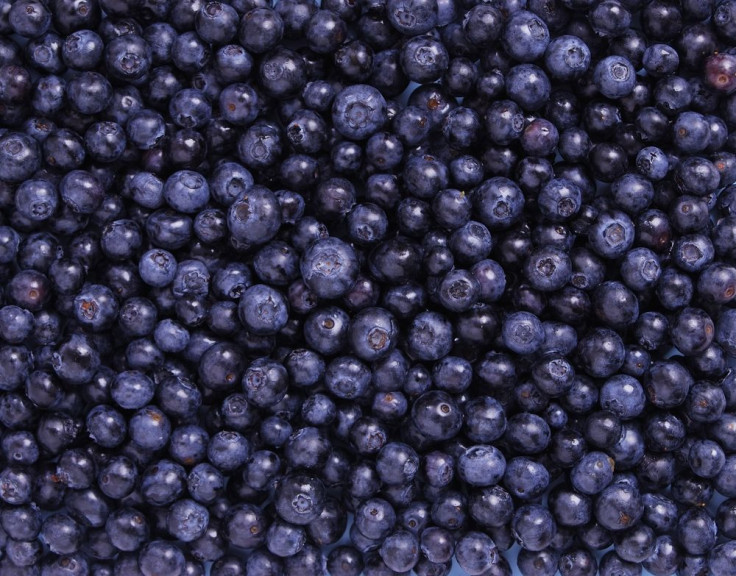Blueberries For The Human Body: 2 Tons Of Powdered Blueberries May Soon Help Reveal The Fruit's Dietary Prowess

Blueberries were first examined by botanists more than 13,000 years ago, yet it has only been in the last two decades that researchers have been paying their health benefits much attention. New and upcoming research will reveal for the first time exactly how a long-term blueberry intake will affect the human body thanks to creative ideas in delivery.
“In science, we get very anal, ‘why is it? Why is the blueberry very good?’ and we start digging down and ultimately we find something, some compound, and then someone wants to make it into a pill instead of served as a food,” said Dr. Eric Rimm, professor of epidemiology and nutrition at Harvard School of Public Health and Harvard Medical School, who served on the scientific advisory committee for the 2010 U.S. Dietary Guidelines for Americans, and presented his research titled “Polyphenols: A Very Good Idea” at the Blueberry Health Research and Culinary Luncheon on Wednesday.
“Hopefully the message that we can reach at the end of the day today is that we don’t need to necessarily look for a magic bullet or a magic food, or I hate the term ‘super food’ because it makes it seem like there’s something more magical about it than it is,” Rimm said. Previous research has extracted particular compounds out of the blueberry and into its participants’ diets in order to explore its health benefits; however, no one has fed them all-natural blueberries.
With the support of the U.S. Highbush Blueberry Council, who collected over two tons of blueberries, dried them, then broke them down into powder form, Rimm can now collaborate with the University of East Anglia to find out how long-term blueberry intake benefits humans.The Council works to promote the healthy growth of the blueberry industry through research and wellness awareness.
The reason for the powder and not just regimenting their participants to eat blueberries is because each blueberry pack is different, with various sizes and from different produces. By using the same batches of blueberries and turning them into powder form, researchers will be able to give precisely measure amounts of one to three servings a day, and easily create a placebo to serve as a control. Their blind study currently has 25 participants signed up, but they are waiting for more and hope to have their findings published within a year.
“A group of polyphenols are called flavonoids and one of the components of flavonoids are anthocyanin, which is what makes blueberries, blue,” he said. Blueberries yield a vast amount of health benefits, as they are low in fat, full of dietary fiber, vitamin C, at 80 calories a cup. The phytonutrients within them are dietary polyphenols, which are also found in wine, tea, apples, chocolate, and coffee, and are responsible for its antioxidant and anti-inflammatory properties.
“There’s been decades of science of studying the blueberry. It started out by doing some basic studies of getting a petri dish and pulling a compound out and seeing what it does in a petri dish,” Rimm said. “Then they’ve done some high dose feeding studies of animals to see what they did but everyone’s always worried if you give a mouse a lot of blueberries is it really the same thing as feeding it to humans?”
Then food chemists from around the world began to analyze different fruits and created very detailed food compound data bases. This allowed researchers, physicians, and dieticians alike to look at a patient’s diet, see what they’ve eaten and know exactly how many compounds of polyphenols and other compounds are in your body.
Polyphenol s are the most abundant antioxidant in our diets, and according to a study published in The American Journal of Clinical Nutrition, they’ve only come to the attention of nutritionists recently. It’s been proven to prevent cardiovascular diseases, cancers, and osteoporosis. “Polyphenols are in hundreds and hundreds of different compounds of things we eat,” Rimm said. “They have other potential we need to explore. They’re not just antioxidants.”
Last year, Rimm published a study in the journal Circulation on the health benefits of blueberries' key compound anthocyanin, and it was found to show better aging for middle-aged women. The top 20 percent who ate blueberries most frequently were shown to have the best life longevity and health, as opposed to the bottom 20 percent who faired the least. Rimm looks forward to the results of his newest study in order to show just what blueberries can do for our health.



























